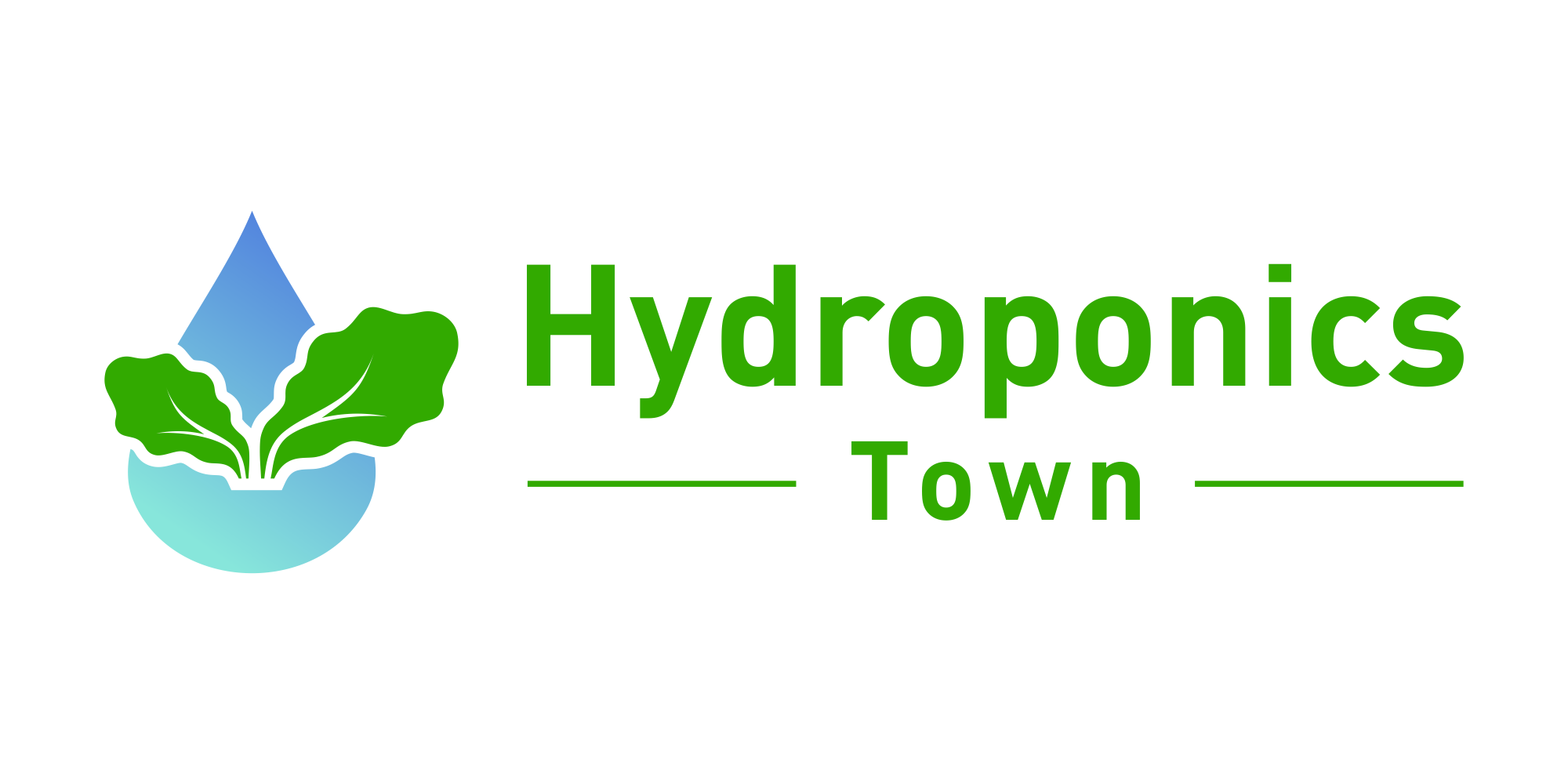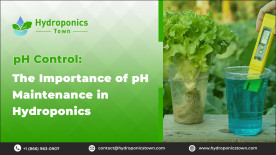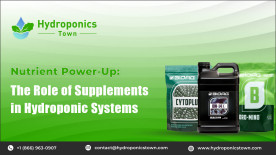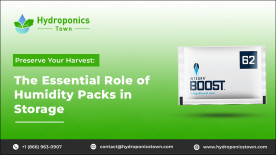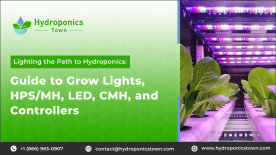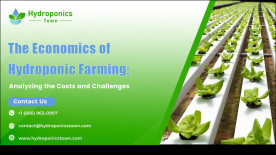Hydroponics refers to the method of soil-less cultivation of plants with the help of nutrient water solution that includes necessary minerals and elements. By using the hydroponic planting you can grow various vegetables, herbs, and some small fruits.
The main advantage of hydroponic plants is you can cultivate the plants throughout the year as they are not dependent on season or climate conditions. This method of cultivation is widely used in commercial farming, especially for growing high-value crops like lettuce, tomatoes, and herbs. It is also popular among home gardeners and indoor growers due to its space-efficient nature and ability to control growing conditions effectively.
Here we will see about the 13 best plants to grow hydroponically.
Table of contents : |
How to grow hydroponic plants
There are several things you need to know and check before growing hydroponic plants, such as the materials you require, sufficient space that satisfies the required conditions of hydroponics, and what plants can be grown using this method.
Below we have mentioned the basic steps on how to grow hydroponic plants.
Choose your preferred hydroponic plant system:There are different methods of hydroponics that include deep water culture, nutrient film technique, drip systems, wicking, etc. First, select one of the methods to start growing your plants hydroponically.
Prepare the nutrient solution: Mix the appropriate amount of hydroponic nutrient solution with water according to your chosen method and formula.
Plant your seeds/seedlings: In some methods, you can plant the seeds but in some, you have to use seedlings. Place them carefully into the containers you are using, ensuring the roots are in contact with the growing medium or submerged in the nutrient solution.
Maintain the pH level:Every plant has its own pH level and you need to maintain the solution's pH level to match your plants range using a pH meter.
Monitor and adjust the conditions: Regularly monitor the temperature, humidity, pH level, and nutrient concentration within the hydroponic plant system. Adjust these factors as necessary to maintain optimal growing conditions for your plants.
Ensure the lighting conditions: Hydroponic plant systems are usually indoors and you need adequate lighting for your plant to grow. There are different types of grow lights available, use the fluorescent tubes to save your budget.
Monitor the nutrient solution: Monitor and maintain the appropriate nutrient solution by periodically replacing or replenishing the solution.
Monitor plant growth and health: Frequently inspect your plants for signs of nutrient deficiencies, pests, or diseases. Address any issues promptly by adjusting the nutrient solution, applying appropriate treatments, or removing affected plants.
Harvest: Once your plants reach the desired maturity, harvest them by carefully removing them from the growing containers.
13 Best Plants to Grow Hydroponically
You can grow almost every type of plants and herbs using hydroponic methods but some may need more space and are used for commercial purposes. You can also grow small plants and delicious fruits on your lawn that require less space.
For those who want to grow plants hydroponically in their lawn or private space, here are the 13 best plants to grow hydroponically.
Vegetables
Spinach: Spinach is one of the popular choices for hydroponic planting. They grow quickly and easily and is recommended to use the nutrient film technique (NFT) for optimum growth. They require less lighting conditions and can be grown indoors and outdoors and generally take 30 - 40 days to grow.
Kale: Kale has a variety of nutritional benefits and can be easily grown using hydroponic methods. It requires moderate temperatures and takes less than 40 days to grow.
Lettuce: Lettuce is the most popularly grown veggie using a hydroponic plant system and it is the best plant for hydroponics. It can be grown by using a method of hydroponics including NFT, DWC, aeroponics, ebb, etc. Lettuce grows faster when grown hydroponically and takes less than 30 days to grow.
Tomatoes: Both the regular tomatoes and cherry variants can be grown using various hydroponic methods. The commonly used method to grow tomatoes is deep water culture (DWC). Hydroponic planting reduces insect and disease infestation and hence reduces the from pests. As tomatoes require more lighting, you should provide sufficient grow light to the plant for at least 8 hours a day.
Beans: Various types of beans such as green beans, pole beans, pinto beans, lima beans, etc can be grown using hydroponic planting. They require less maintenance and are one of the most productive hydroponic plants.
Peppers: Similar to tomatoes bell peppers also need much lighting and are the best plants for hydroponics. Different varieties of peppers can be grown hydroponically but you have to take care of their height. Don’t let them grow to their full height and the best methods to grow them are deep water culture, ebb, and flow systems.
Cucumbers: Cucumbers are usually grown at commercial greenhouses but with the help of a hydroponic plant system they can be grown at your home and they grow rapidly. All they need is adequate light and temperature. These are grown widely and are one of the fastest-growing hydroponic plants.
Herbs
Chives: Chives don't require any particular temperatures and are the best plants for hydroponics. They are easily grown and are easy to maintain. Chives take around 40 - 60 days to harvest using hydroponic planting.
Basil: Basil is the best plant for hydroponics. They grow very quickly and require very little time to harvest. The only thing you should bother about is lighting. They need more lighting, hence you have to get more grow lights.
Mint: Mint is easily grown in both soil and hydroponic plant systems. They are the best indoor hydroponic plants and good plants for hydroponic beginners.
Fruits
Strawberries: Strawberries take around 60 days to grow and are popularly grown in commercial hydroponics. The best methods to grow them are ebb, flow system, NFT, and deep water culture. They can be beautifully grown in tower style which is typically called a hydroponic plant tower.
Blueberries: Blueberries take a longer time to grow and require warm temperatures. The NFT system is the commonly used hydroponic method.
Grapes: Grapes are not recommended for beginners in the hydroponic plant system but are the best to grow if you gain some experience in hydroponic planting. They require more maintenance and are mostly used in commercial hydroponic plant systems.
Check out The Ultimate Guide to Hydroponic Farming
Hydroponic Growing Tips
Here are some hydroponic growing tips to help you succeed:
Start with healthy seeds or seedlings: Choose high-quality seeds or healthy seedlings from a reputable source to ensure strong and productive plants.
Maintain proper pH levels: Regularly monitor and adjust the pH of your nutrient solution to the specific range suitable for the plants you are growing.
Provide sufficient lighting: Ensure your plants receive the required amount of light for optimal growth. You can use LED lights as a grow light, they are energy efficient and have the ability to provide a wide spectrum of light.
Avoid overfeeding: Be cautious not to overfeed your plants with nutrients, as it may lead to nutrient imbalance or toxicity.
Maintain proper temperature and humidity: Ensure the growing environment stays within the appropriate temperature and humidity range for your plants.
Regularly clean and maintain your system: Keep your hydroponic planting system clean and free from debris to prevent clogs, blockages, and the growth of harmful pathogens.
Practice proper spacing: Ensure adequate spacing between plants to prevent overcrowding, which can lead to poor airflow and an increased risk of disease.
Monitor plant health and address issues promptly: Inspect your plants frequently for any signs of nutrient deficiencies, pests, or diseases. Take immediate action to address any issues, such as adjusting nutrient levels, applying appropriate treatments, or removing affected plants to prevent the spread of diseases.
By following these tips, you can maintain a healthy hydroponic plant system.
Factors to Consider in Choosing Hydroponic Plants
When choosing plants for hydroponics, several factors should be considered to ensure successful growth and optimal yields. Here are some important factors to consider:
What you want to grow or growth characteristics: Select plants that are well-suited for the hydroponic plant system. Look for plants that have a compact growth habit, don’t require extensive root systems, and can adapt well to the controlled environment of hydroponics.
Space and light: consider the available space for the hydroponic setup and the amount of light you can provide. Hydroponic plants such as herbs or small vegetables, require less space and can be grown in compact systems or vertical setups. Others like vine crops or larger fruiting plants, may need more room to spread out. Some may need less light and some plants may need more lighting. So based on the plants you want to grow, you have to set up the hydroponic plant system indoors or outdoors.
Growth rate and harvest time:different plants have different growth rates and harvest times. Determine how quickly you want to harvest your crops and choose plants accordingly. Some plants, like microgreens or certain herbs, have fast growth rates and can be harvested within a few weeks, while others, like tomatoes or peppers, have longer growth cycles.
Budget: It is a very important factor to consider. Know your budget first and plan accordingly. If you want to start growing hydroponic plants on your lawn, you should get the best quality products for your hydroponic plant system. You can cut many things and save your budget by making some DIYs to grow your plants.
FAQs
What plants are good for hydroponic wick systems?
Plants that are well-suited for a hydroponic wick system include leafy greens like lettuce, spinach, and kale, as well as herbs such as basil, cilantro, and parsley. Strawberries, certain varieties of peppers, and flowers like marigolds or petunias can also thrive in a wick system. Additionally, microgreens like arugula and radish are suitable for this compact and low-maintenance hydroponic setup.
Can you use Epsom salts for plants in hydroponics?
Yes, Epsom salts can be used in hydroponics to provide magnesium and sulfur, which are essential nutrients for plant growth. Magnesium plays an important role in chlorophyll production, while sulfur is important for protein synthesis and overall plant health. However, it is essential to use Epsom salts sparingly and ensure that the nutrient solution maintains the appropriate balance of all essential nutrients. Monitoring the nutrient levels will help prevent nutrient imbalances and ensure healthy plant growth in a hydroponic plant system.
How often should you water hydroponic plants?
The frequency of watering hydroponic plants can vary depending on factors such as the plant species, growth stage, environmental conditions, and the specific hydroponic plant system being used. In general, hydroponic plants should be watered regularly to maintain a constant moisture level in the root zone. It helps to prevent the roots from becoming dry or waterlogged. A common practice is to water hydroponic plants multiple times throughout the day for shorter durations, ensuring that the growing medium remains moist but not saturated. However, it is crucial to monitor the moisture levels and adjust the watering frequency as needed to prevent overwatering or underwatering, promoting healthy growth and preventing issues like root rot.
How long does it take to grow a plant using hydroponics?
The duration for plant growth in hydroponics varies based on the specific plant species, environmental conditions, and growth factors. Hydroponics generally promotes faster plant growth compared to traditional soil-based methods due to optimized nutrient delivery and controlled environments. Leafy greens like lettuce or herbs can typically reach maturity within a few weeks to a couple of months. Conversely, larger fruiting plants such as tomatoes or peppers may require several months to grow and produce ripe fruit. It is essential to consider the unique growth characteristics of each plant when estimating the time required for hydroponic cultivation.
What are three plants that are not recommended for hydroponics?
Three plants that are not recommended for hydroponics are large trees and shrubs, root vegetables, and long-lived perennials. These plants have specific growth requirements, extensive root systems, or longer growth cycles that make them challenging to grow effectively in standard hydroponic setups.
